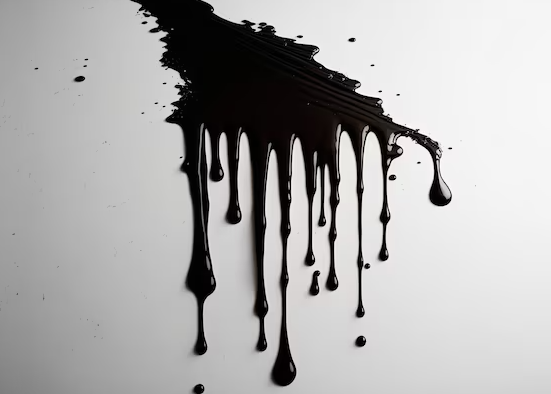Why Is Tar Seeping Through My Chimney’s Brickwork?: If you detect a sticky, tar-like substance leaking through the brickwork of your chimney, it’s probably an indication of more serious problems. Although this ugly issue might initially appear to be cosmetic, it frequently signals structural issues and possible dangers with your chimney system. Maintaining your home’s safety and aesthetics requires knowing why this occurs and taking quick action to fix it.
Creosote, a result of burning wood or fossil fuels, is most likely the “tar” you perceive. Creosote is created as smoke cools as it ascends through the chimney and condenses. Over time, this thick, tarry residue accumulates on the flue walls. It usually doesn’t escape if the liner is intact and the chimney is kept up. Creosote can, however, leak through the brickwork of the chimney if it has cracks, porous masonry, or a damaged liner.
This problem can be caused by a number of things. One typical cause is damaged or missing chimney liners. As a barrier, liners prevent gasses, smoke, and creosote from coming into touch with the bricks. Creosote can spread through exposed masonry when there is no suitable liner. Another cause is an excessive accumulation of creosote. Inadequate cleaning of the chimney can result in heavy layers of creosote that, when heated and compressed, can push through porous materials or tiny gaps.
Masonry itself may be involved as well. Over time, moisture is naturally absorbed by bricks and mortar. This porosity facilitates creosote’s passage through older chimneys or those that are not properly waterproofed. Excessive moisture content, whether from snow, rain, or humidity, might make the problem worse. Creosote becomes more fluid and more susceptible to soak through when moisture is mixed with it. Inadequate airflow in the chimney causes smoke to linger and cool more quickly, which exacerbates the issue and increases the formation of creosote.
Creosote accumulation is also influenced by the fuels you burn. Creosote builds up more quickly when unseasoned or green wood, as well as softwoods like pine, are burned because they produce more smoke and tar. This eventually makes seepage more likely, particularly in chimneys that already have vulnerabilities.
Tar seepage must be addressed right away for a number of reasons. Because of its extreme flammability, creosote accumulation presents a significant fire risk. Chimney fires have the potential to spread swiftly and could harm your house. The masonry may become weakened by the seepage itself, necessitating expensive structural repairs. Creosote can also generate toxic vapors that could possibly enter your home and endanger your health. Creosote’s potent, disagreeable smell can also make your house less comfortable, especially in warm weather.
Professional action is necessary to resolve and prevent creosote seepage. A qualified chimney sweeper can examine the chimney, remove creosote buildup, and evaluate structural problems like cracked or damaged liner. A long-lasting solution may be offered by chimney liner replacement or repair, particularly if stainless steel or another sturdy material is utilized. The likelihood of creosote migration can be decreased by sealing your chimney against moisture using masonry repairs and waterproofing.
The secret to preventing these issues in the future is routine chimney maintenance. Cleanings and inspections once a year help stop excessive creosote accumulation and spot possible problems before they get out of hand. Another way to reduce the generation of creosote is to burn seasoned hardwoods rather than softwoods or greenwoods. By increasing airflow, ensuring enough ventilation—either with a chimney cap or an updated damper system—can further minimize accumulation.
In extreme situations, other defenses, such as heat shields, could be put in place to keep creosote from getting to the masonry. This can work especially well for older chimneys where seepage has been a persistent problem.
Tar seeping through your chimney is more than just an eyesore; it’s a warning sign of potential hazards and maintenance concerns. By addressing the root causes and investing in proper care, you can restore your chimney’s functionality, protect your home, and enjoy your fireplace with peace of mind.


